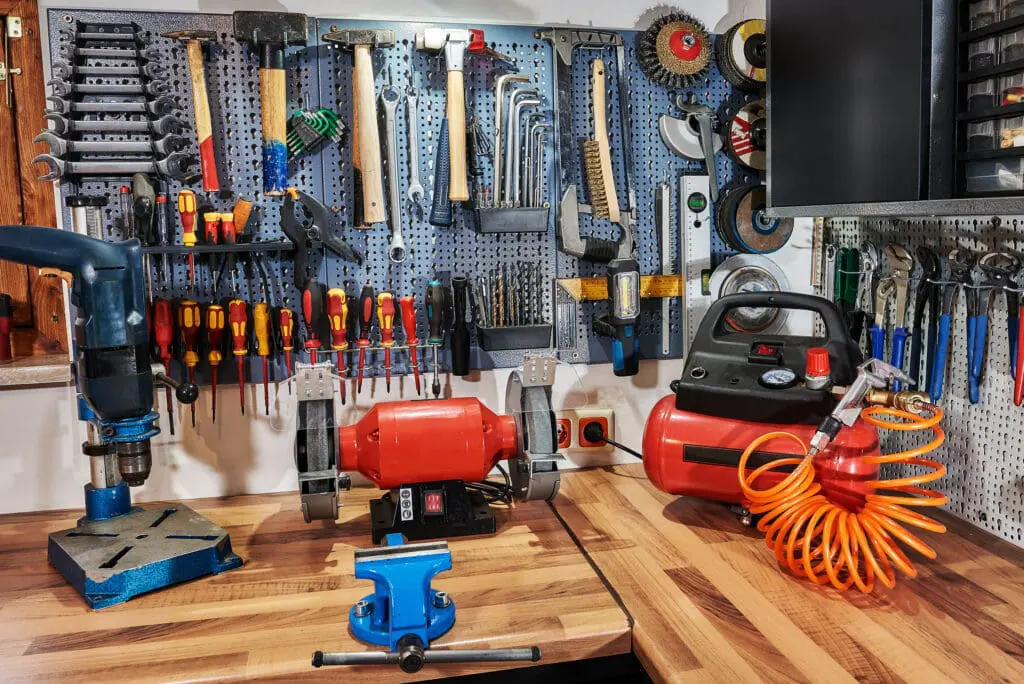
The fabrication shop is a place that has a schedule so tight that a broken machine, or a bottleneck in the operations, can prevent a job from going out on time. Not all shop machines or shop tools affect time so directly. Some machines and shop tools, so far as they do their work troublelessly, keep everything going smoothly. When they do not, the whole works stand idle waiting to get that one process delivered.
Knowing which of the working tools has this big effect upon the time of completing the job enables the shop owner to see why there are some shops which continually deliver their goods on time, and why there are some that constantly go behind because of a perplexing condition that seems beyond their control.
The Welding Bottleneck
Welding comes at the crucial point in many fabrication jobs. The time can be made good on getting parts cut, shaped and gathered ready for welding, but if the shop has not sufficient welding capacity it will be found that everything backs up into a big bottleneck. This is because welding is often slower than other kinds of metal working processes, and besides this it requires skilled operators who cannot be easily replaced or supplemented.
A shop may have the very best cutting machines in the world, kept in good operating condition, with good material handling and good processes for gathering work together and getting it ready for welding, but even then, if the welding stage becomes a bottleneck, none of that efficiency matters. Jobs stack up waiting for welding, and delivery dates slip no matter how well everything else is running.
This explains why the capability of welding equipment matters so much. Machines that can be relied upon to run consistently, produce quality welds, and not require constant adjustment allow welders to maintain steady progress. When equipment shows unreliability, requires frequent adjustments, or struggles with the work being done, welding becomes not an orderly process but a source of unpredictable delays.
The relationship between equipment quality and operator productivity is particularly strong in welding. A skilled welder with poor equipment will turn out less work than a moderately skilled welder with good equipment. The reliability of the machine, its ease of use, and its consistent performance directly affect how much welding gets completed per shift.
How Plasma Cutters Make or Break Schedules
The cutting work determines the speed of all that follows. If cutting is slow, subsequent operations must be delayed. If cutting operations are inaccurate, time gets wasted in rework. If cutting equipment fails, the entire operation stops until repairs are completed.
Plasma cutters have become essential equipment for metal fabrication because they can handle a wide range of materials and thicknesses efficiently. When they work well, cutting happens quickly and accurately. When they don’t, the effects ripple through the entire project timeline.
The consumables issue with plasma cutting creates a specific type of delay risk. Torch tips, electrodes, and nozzles wear out and need replacement. Workshops which maintain adequate consumable inventory keep their cutting operations running smoothly. Those who run out of consumables or use worn ones too long face either downtime waiting for parts or poor cut quality that creates problems in later operations.
Access to reliable suppliers becomes important here. Operations in areas with good supplier networks, whether dealing with a welding shop perth or suppliers in other major cities, can acquire consumables and parts quickly when needed. Remote operations or those relying on slow-moving supply chains experience lengthy delays when consumable or equipment troubles arise.
Material Handling Equipment Nobody Thinks About
Cranes, hoists, and lifting equipment don’t get much attention until they’re not working. But the time spent moving heavy materials, positioning pieces for welding, and handling finished components adds up significantly over a project’s duration.
Insufficient material handling capability forces manual handling that is slow and creates safety risks. Workers spend time rigging and moving materials that could be spent on productive work. Projects involving heavy fabrications or large assemblies particularly suffer when material handling equipment is inadequate or unreliable.
The productivity impact goes beyond just moving time. Poor material handling increases the risk of damage to work in progress, creates positioning difficulties that slow down welding and assembly, and contributes to worker fatigue that reduces overall efficiency. None of these show up as equipment downtime but they extend project timelines just as effectively.
When Auxiliary Equipment Becomes Critical
Grinders, sanders, preparation tools, these seem like secondary equipment compared to welding machines and cutting tables. But inadequate auxiliary equipment creates its own delays. Welds need cleaning and finishing. Materials require preparation before welding. Poor or insufficient tools for these tasks slow down the overall workflow.
Multiple workers needing to share limited auxiliary equipment creates scheduling conflicts and idle time. A welder waiting for an available grinder isn’t welding. Material prep operators waiting for sanders can’t prepare the next pieces. The lack of seemingly minor equipment creates gaps in workflow that accumulate into significant time losses.
The temptation is always to invest in major equipment and economize on auxiliary tools. But a workshop with excellent welders and cutters but insufficient grinders and preparation tools will still miss deadlines because the workflow gets interrupted at these smaller but necessary steps.
Power Supply and Infrastructure
Electrical capacity issues rarely get blamed for project delays but they’re often a hidden factor. Welding equipment draws significant power, particularly when multiple machines run simultaneously. Inadequate power supply means either limiting how many welders can work at once or dealing with voltage fluctuations that affect weld quality and equipment reliability.
Compressed air supply is another infrastructure element that affects multiple processes. Plasma cutters need clean, consistent air supply. Pneumatic tools require adequate pressure and volume. Air preparation equipment, filters, dryers, these aren’t glamorous but insufficient or poorly maintained air systems create problems across numerous operations.
Running out of compressed air capacity or dealing with contaminated air supply causes delays that don’t look like equipment failures but have the same effect on project timelines. These infrastructure limitations often don’t become apparent until a workshop takes on larger projects or tries to run multiple processes simultaneously.
The Reliability Factor
All the capacity in the world doesn’t matter if equipment is unreliable. A machine rated for high productivity but that breaks down twice a week creates more delays than a slower machine that runs consistently. Unplanned downtime is worse than planned capacity limitations because it’s unpredictable and often happens at critical project phases.
This reliability consideration affects equipment purchasing decisions. The cheapest option or the one with the most impressive specifications might not be the one that keeps projects on schedule if it requires frequent repairs or constant adjustment. Equipment reliability, while hard to quantify before purchase, ultimately determines whether project schedules hold up under real-world operating conditions.
Supplier support matters here too. Equipment will eventually need service, repairs, or technical support. Responsive suppliers who can provide quick assistance or rush parts when needed help minimize downtime. Suppliers who are difficult to reach or slow to respond turn minor issues into extended delays.
Making Strategic Equipment Choices
The equipment that determines whether jobs finish on time isn’t always the most obvious or expensive. Sometimes it’s the auxiliary tools that nobody thinks about. Sometimes it’s infrastructure capacity that seemed adequate until it wasn’t. Often it’s the reliability of key process equipment where bottlenecks naturally form.
Understanding which equipment falls into this critical category helps workshops invest appropriately. A slightly more expensive welding machine that runs reliably might pay for itself in maintained schedules and avoided delays. Adequate auxiliary equipment prevents workflow interruptions that accumulate into missed deadlines. Proper infrastructure capacity ensures that adding capability doesn’t create new limitations.
The workshop equipment that truly matters for meeting deadlines is whatever prevents work from flowing smoothly from one stage to the next. Identifying and addressing these critical points determines whether a workshop consistently delivers on schedule or constantly struggles with delays that seem to come from everywhere and nowhere at once. Success comes not from having the most equipment or the newest technology, but from having the right equipment that works reliably when needed and doesn’t create bottlenecks that bring the entire operation to a standstill.


